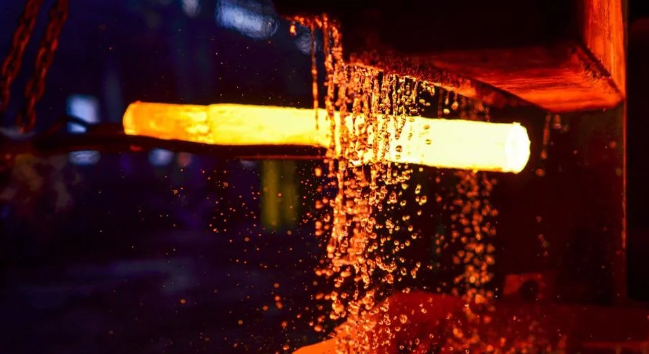-
About
-
Our Brand
-
Products
-
Community
Community
Blog
Blog
Comprehensive Guide to Pipe Heat Treatment
- Writer
- STEELTOPIA
- Date
- 24-06-20
Comprehensive Guide to Pipe Heat Treatment

Introduction to Pipe Heat Treatment
Pipe heat treatment is a crucial process in various industries, designed to enhance the properties of pipes. This guide explores the definition, purpose, and significance of heat treatment for pipes, providing an in-depth look at how this process impacts their performance and durability.
Types of Heat Treatment Processes for Pipes
Understanding the different heat treatment processes is essential for optimizing the properties of pipes. Here are the main types:
1. Annealing
Annealing involves heating the pipe to a specific temperature and then slowly cooling it. This process softens the metal, improves ductility, and relieves internal stresses.
2. Normalizing
Normalizing is a heat treatment process where the pipe is heated above its critical temperature and then air-cooled. This method refines the grain structure, enhancing strength and toughness.
3. Quenching
Quenching involves heating the pipe to a high temperature and then rapidly cooling it in water, oil, or air. This process increases hardness and strength but can introduce residual stresses.
4. Tempering
Tempering follows quenching to reduce brittleness and improve toughness. The pipe is reheated to a lower temperature and then cooled again.
5. Case Hardening
Case hardening adds a hard, wear-resistant surface to the pipe while maintaining a softer, ductile core. This process includes carburizing and nitriding techniques.
6. Stress Relieving
Stress relieving heats the pipe to a temperature below its transformation range and then cools it uniformly. This reduces internal stresses without significantly altering the pipe's structure.
Materials and Metallurgy
Common Materials for Pipes
Various metals and alloys are used in pipe manufacturing, each with unique properties:
- Carbon steel
- Stainless steel
- Alloy steel
- Cast iron
Impact of Heat Treatment
Heat treatment alters the microstructure of these materials, enhancing their mechanical properties, such as strength, hardness, and resistance to corrosion and wear.
Equipment and Techniques
Furnaces and Equipment
Different types of furnaces are employed in heat treatment processes, including:
- Electric arc furnaces
- Gas furnaces
- Induction furnaces
Heating and Cooling Techniques
Uniform heating and cooling are critical for achieving desired properties. Techniques such as controlled atmosphere heating and quenching media (water, oil, air) are used.
Innovations in Technology
Advancements in heat treatment technology, like vacuum heat treatment and laser heat treatment, offer improved precision and efficiency.
Heat Treatment Standards and Specifications
Industry Standards
Compliance with industry standards, such as ASTM and ASME, ensures the quality and safety of heat-treated pipes.
Safety and Quality Regulations
Adhering to these standards is vital for maintaining the integrity and performance of pipes in various applications.
Applications of Heat-Treated Pipes
Heat-treated pipes are essential in numerous industries due to their enhanced properties:
Oil and Gas Industry
Heat-treated pipes withstand high pressures and corrosive environments, making them ideal for oil and gas exploration and transportation.
Chemical and Petrochemical Industries
In these industries, pipes need to resist chemical corrosion and high temperatures, achievable through appropriate heat treatment.
Construction and Infrastructure
Heat-treated pipes provide the necessary strength and durability for construction projects and infrastructure development.
Benefits of Heat Treating Pipes
Heat treatment offers several benefits, including:
- Improved Mechanical Properties: Enhanced strength, hardness, and toughness.
- Corrosion Resistance: Increased resistance to chemical and environmental corrosion.
- Durability: Extended lifespan and reliability of pipes in harsh conditions.
Challenges and Solutions in Pipe Heat Treatment
Common Issues
Heat treatment can present challenges such as:
- Distortion and warping
- Residual stresses
- Surface oxidation
Solutions
Implementing precise control of heating and cooling rates, using protective atmospheres, and employing post-treatment processes can mitigate these issues.
Environmental and Economic Considerations
Energy Efficiency
Optimizing energy consumption during heat treatment processes reduces costs and environmental impact.
Cost-Benefit Analysis
A comprehensive analysis of the costs and benefits of heat-treated versus non-heat-treated pipes highlights the long-term advantages of heat treatment.
Sustainability Practices
Adopting sustainable practices, such as using renewable energy sources and recycling quenching media, contributes to environmental conservation.
Future Trends and Research in Pipe Heat Treatment
Emerging Technologies
New technologies, such as nanotechnology and additive manufacturing, are revolutionizing heat treatment processes.
Research and Development
Ongoing research in materials science aims to develop new alloys and improve existing heat treatment techniques.
Industry Predictions
The future of pipe heat treatment promises increased efficiency, precision, and sustainability.
Case Studies and Real-World Examples
Successful Projects
Detailed case studies showcase the successful application of heat treatment in various industries, highlighting best practices and lessons learned.
Industry Leaders
Examples from industry leaders demonstrate innovative approaches and solutions to common challenges.
Safety Practices in Pipe Heat Treatment
Safety Protocols
Strict safety protocols and precautions are essential to protect workers and ensure the quality of heat-treated pipes.
Training and Certification
Proper training and certification of personnel are crucial for maintaining high safety and quality standards.
By understanding these aspects of pipe heat treatment, you can appreciate the complexity and importance of this process in enhancing the performance and durability of pipes across various applications.


 HOME
HOME